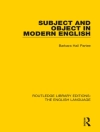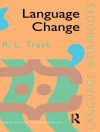Cuprins
Setting the scene
Polysemy and flexibility: introduction and overview
Brigitte Nerlich and David D. Clarke
Cognitive models of polysemy
John R. Taylor
Polysemy: past and present
Brigitte Nerlich
Cognitive approaches
Polysemy and conceptual blending
Gilles Fauconnier and Mark Turner
Reconsidering prepositional polysemy networks: the case of over
Andrea Tyler and Vyvyan Evans
Polysemy as flexible meaning: experiments with English get and Finnish pitää
Jarno Raukko
Metonymic polysemy and its place in meaning extension
Ken-ichi Seto
Synchrony/diachrony approaches
Polysemy in derivational affixes
Adrienne Lehrer
The role of links and/or qualia in modifier-head constructions
Beatrice Warren
Polysemy and bleaching
Jean Aitchison and Diana M. Lewis
Polysemy in the lexicon and in discourse
Andreas Blank
Psycholinguistic approaches
Irony in conversation: salience, role, and context effects
Rachel Giora and Inbal Gur
Young children’s and adults’ use of figurative language: how important are cultural and linguistic influences?
Ann Dowker
Emerging patterns and evolving polysemies: the acquisition of get between four and ten years
Brigitte Nerlich, Zazie Todd and David D. Clarke
Computational approaches
‘I don’t believe in word senses’
Adam Kilgarriff
Senses and texts
Yorick Wilks
Despre autor
Brigitte Nerlich is Senior Research Officer at the University of Nottingham, UK.
Zazie Todd is Lecturer at Leeds University, UK.
David D. Clarke is Professor at the University of Nottingham, UK.
Vimala Herman is Reader at the University of Nottingham, UK.












